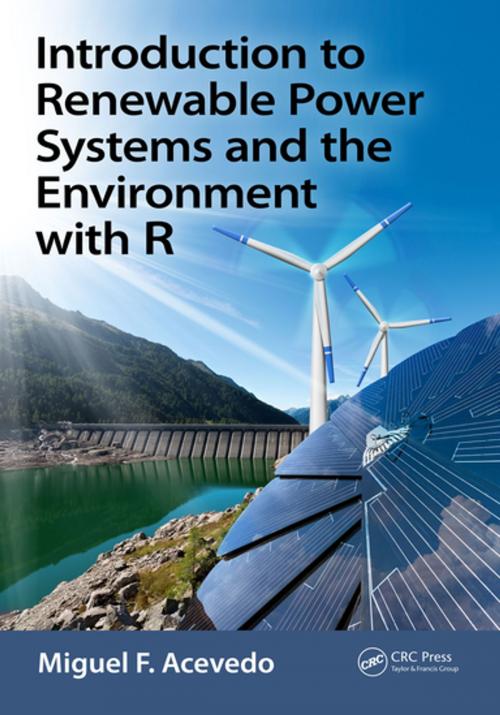Introduction to Renewable Power Systems and the Environment with R
Nonfiction, Science & Nature, Science, Physics, Energy, Technology, Power Resources| Author: | Miguel F. Acevedo | ISBN: | 9781315279596 |
| Publisher: | CRC Press | Publication: | July 26, 2018 |
| Imprint: | CRC Press | Language: | English |
| Author: | Miguel F. Acevedo |
| ISBN: | 9781315279596 |
| Publisher: | CRC Press |
| Publication: | July 26, 2018 |
| Imprint: | CRC Press |
| Language: | English |
Introduction to Renewable Power Systems and the Environment with R showcases the fundamentals of electrical power systems while examining their relationships with the environment. To address the broad range of interrelated problems that come together when generating electricity, this reference guide ties together multiple engineering disciplines with applied sciences. The author merges chapters on thermodynamics, electricity, and environmental systems to make learning fluid and comfortable for students with different backgrounds. Additionally, this book provides users with the opportunity to execute computer examples and exercises that use the open source R system.
Functions of the renpow R package have been described and used in this book in the context of specific examples. The author lays out a clear understanding of how electricity is produced around the world and focuses on the shift from carbon-based energy conversions to other forms including renewables. Each energy conversion system is approached both theoretically and practically to provide a comprehensive guide. Electrical circuits are introduced from the simplest circumstances of direct current (DC), progressing to more complex alternating current (AC) circuits, single phase and three-phase, and electromagnetic devices including generators and transformers. Thermodynamics are employed to understand heat engines and a variety of processes in electrochemical energy conversion, such as fuel cells. The book emphasizes the most prevalent renewable energy conversions in use today: hydroelectrical, wind, and solar.
This book is an invaluable for students as a resource to help them understand those aspects of environment systems that motivate the development and utilization of renewable power systems technology.
Introduction to Renewable Power Systems and the Environment with R showcases the fundamentals of electrical power systems while examining their relationships with the environment. To address the broad range of interrelated problems that come together when generating electricity, this reference guide ties together multiple engineering disciplines with applied sciences. The author merges chapters on thermodynamics, electricity, and environmental systems to make learning fluid and comfortable for students with different backgrounds. Additionally, this book provides users with the opportunity to execute computer examples and exercises that use the open source R system.
Functions of the renpow R package have been described and used in this book in the context of specific examples. The author lays out a clear understanding of how electricity is produced around the world and focuses on the shift from carbon-based energy conversions to other forms including renewables. Each energy conversion system is approached both theoretically and practically to provide a comprehensive guide. Electrical circuits are introduced from the simplest circumstances of direct current (DC), progressing to more complex alternating current (AC) circuits, single phase and three-phase, and electromagnetic devices including generators and transformers. Thermodynamics are employed to understand heat engines and a variety of processes in electrochemical energy conversion, such as fuel cells. The book emphasizes the most prevalent renewable energy conversions in use today: hydroelectrical, wind, and solar.
This book is an invaluable for students as a resource to help them understand those aspects of environment systems that motivate the development and utilization of renewable power systems technology.















